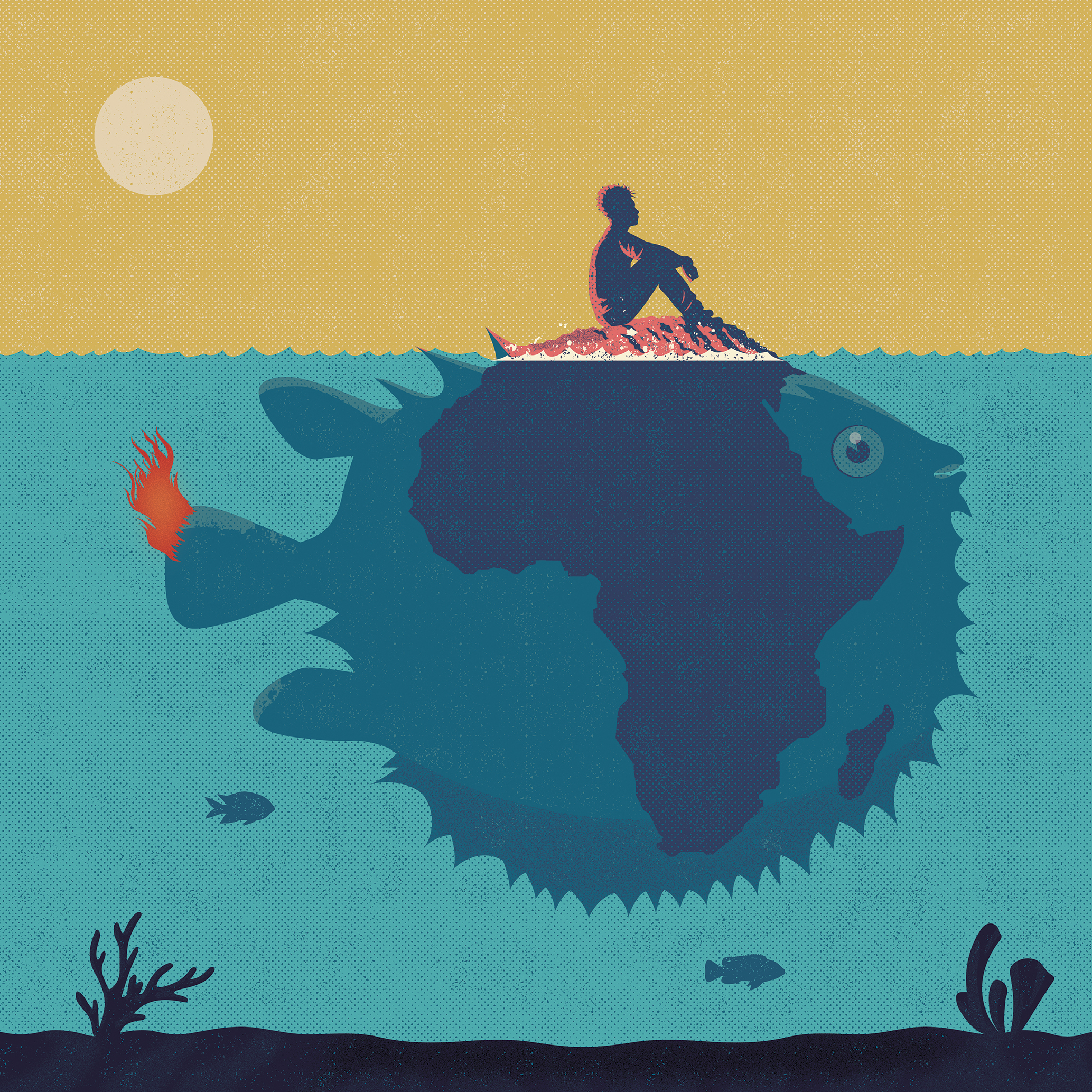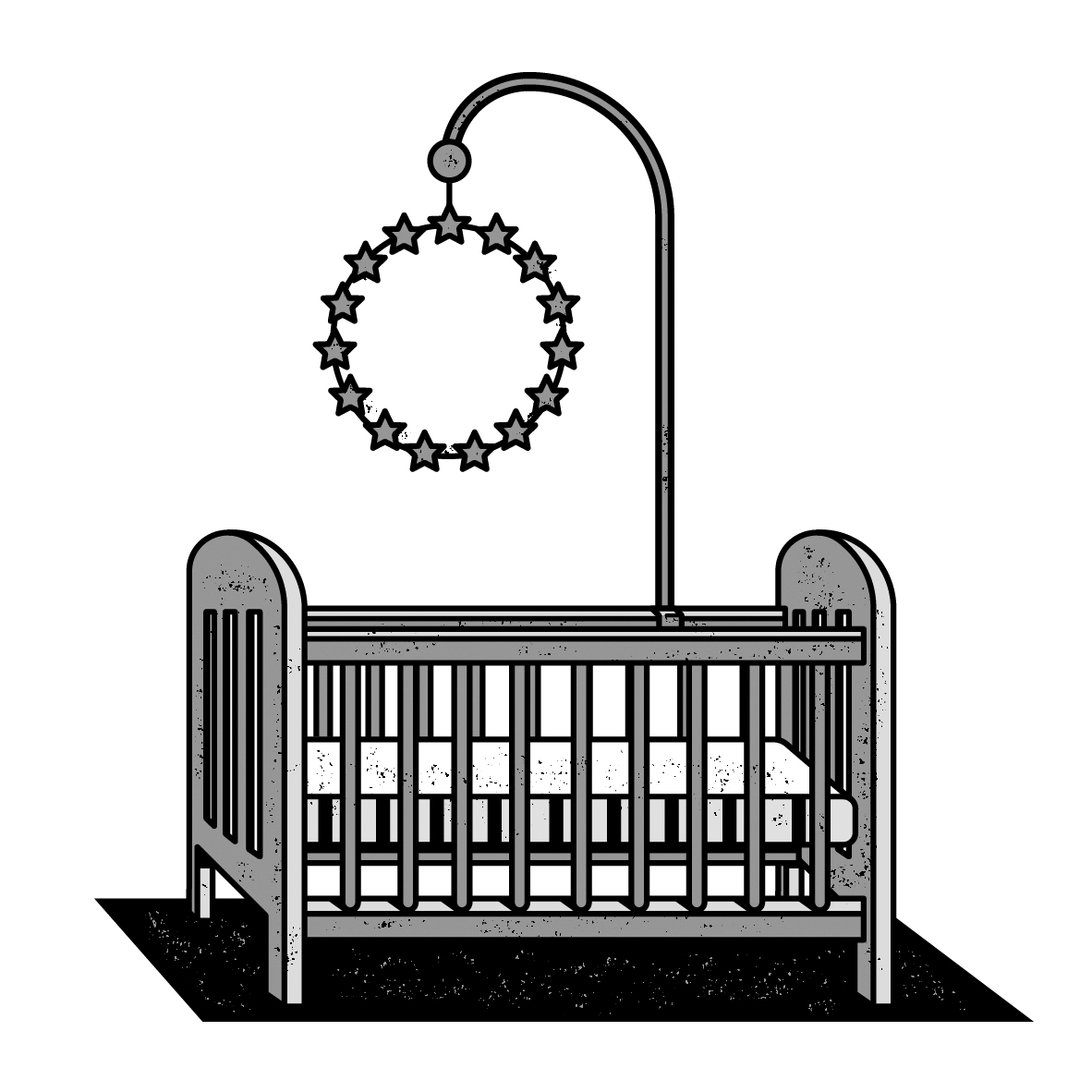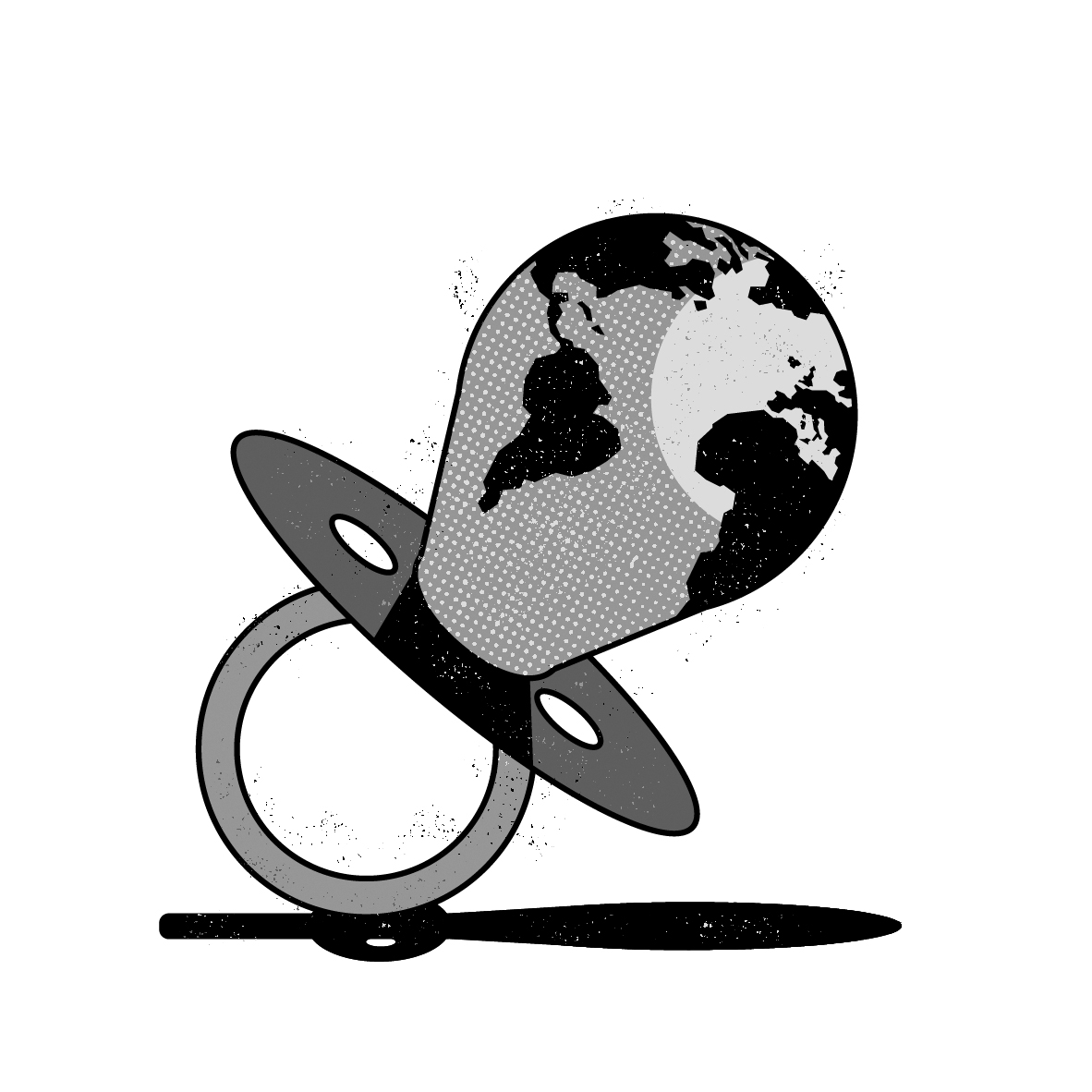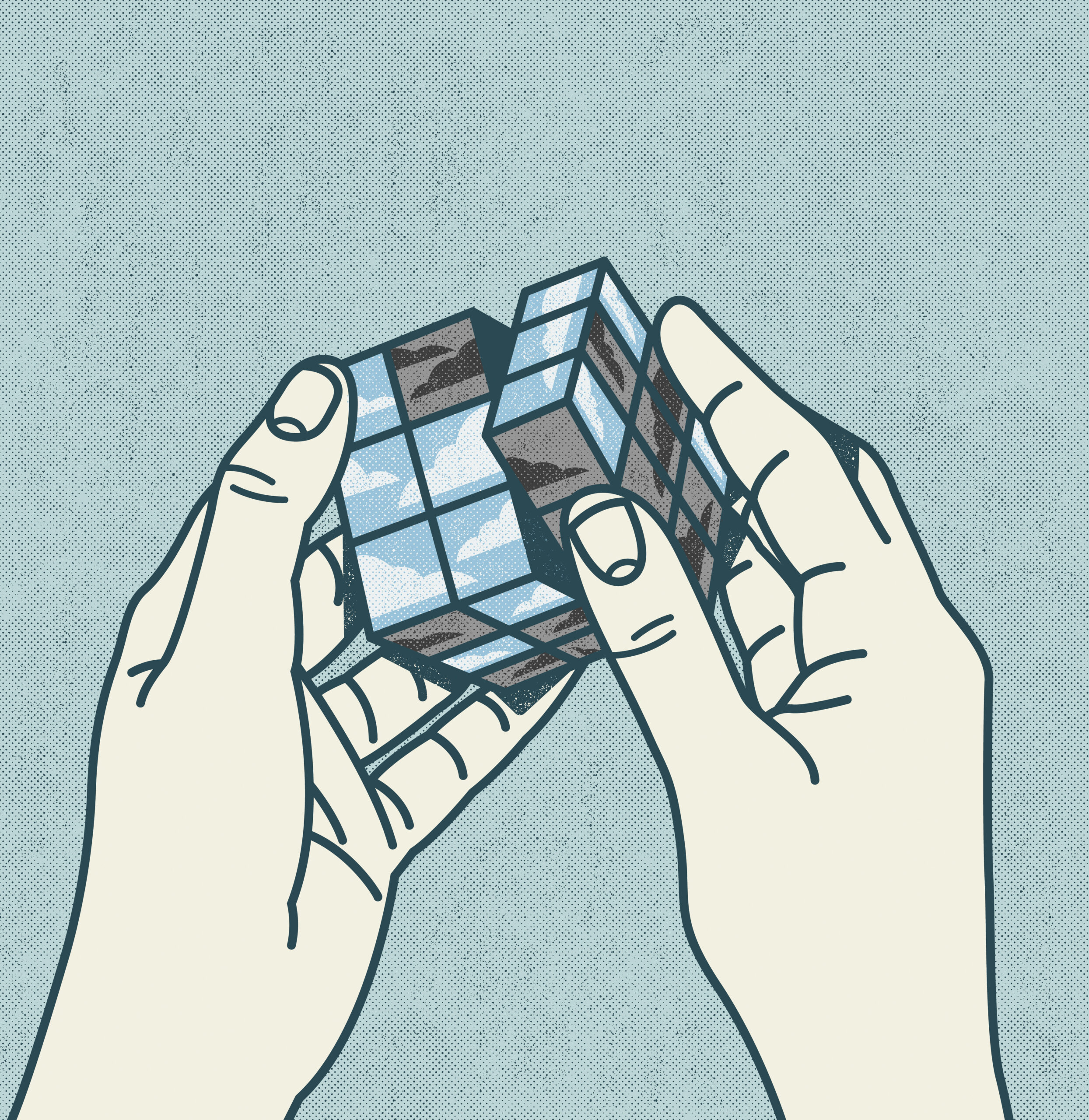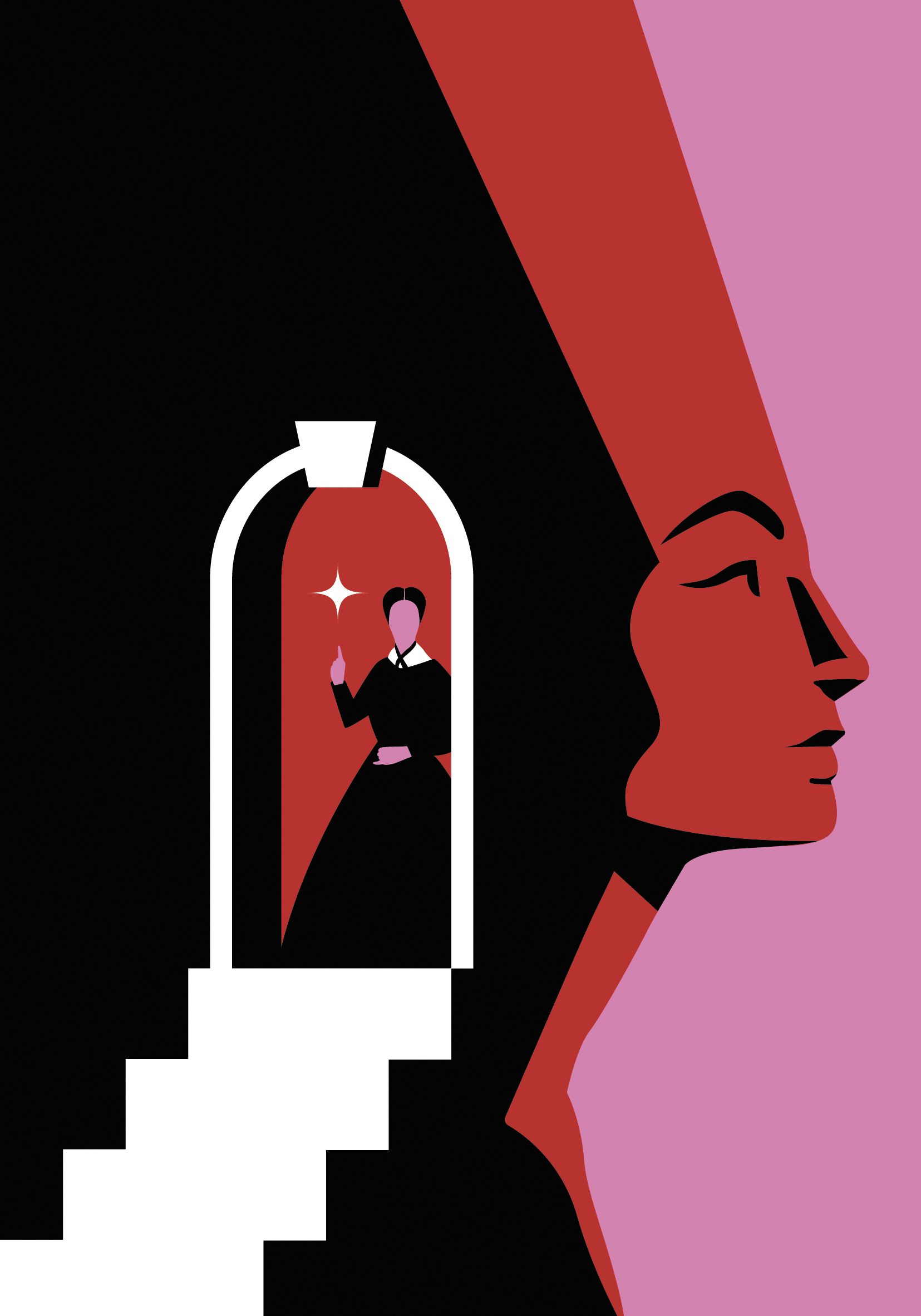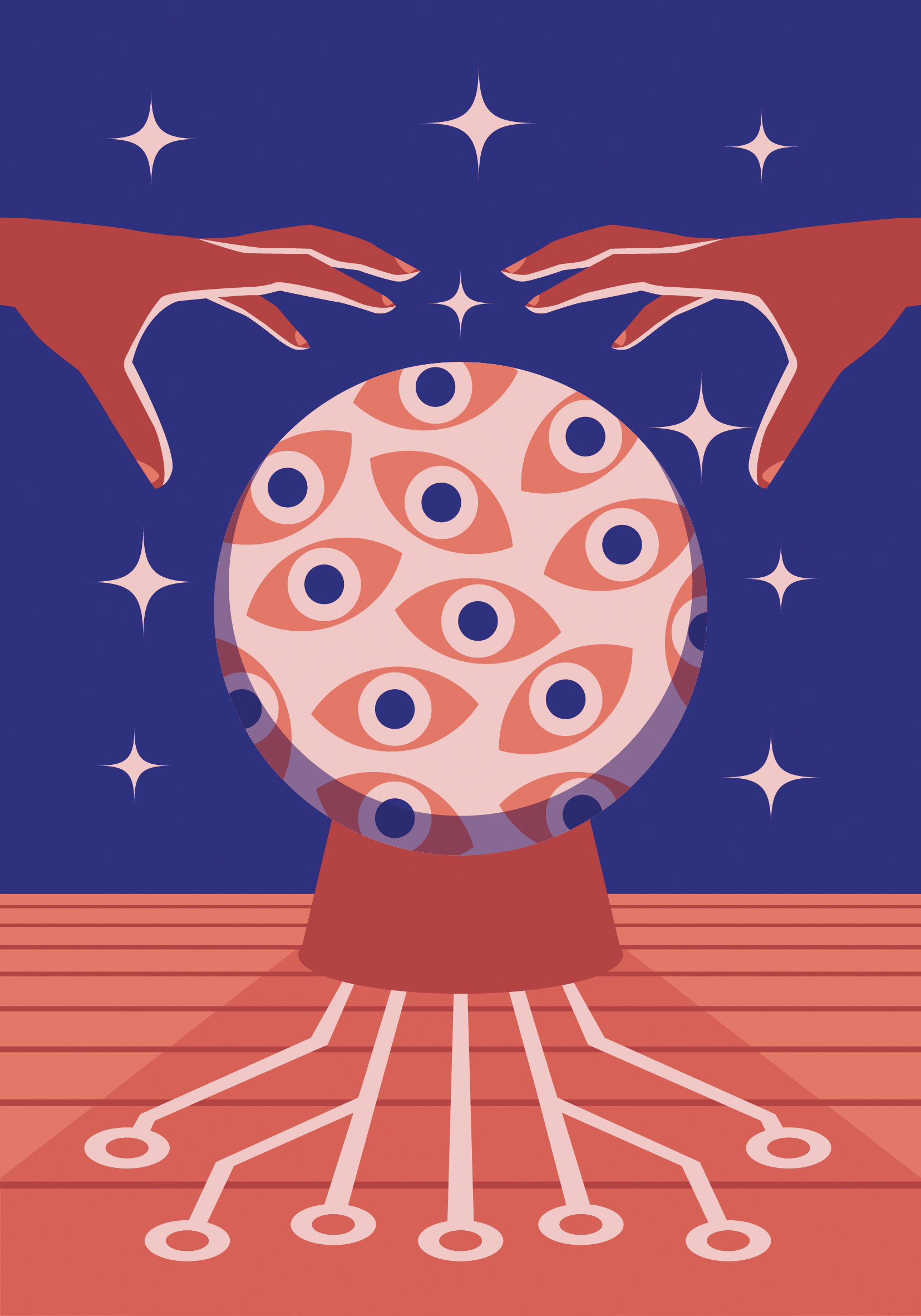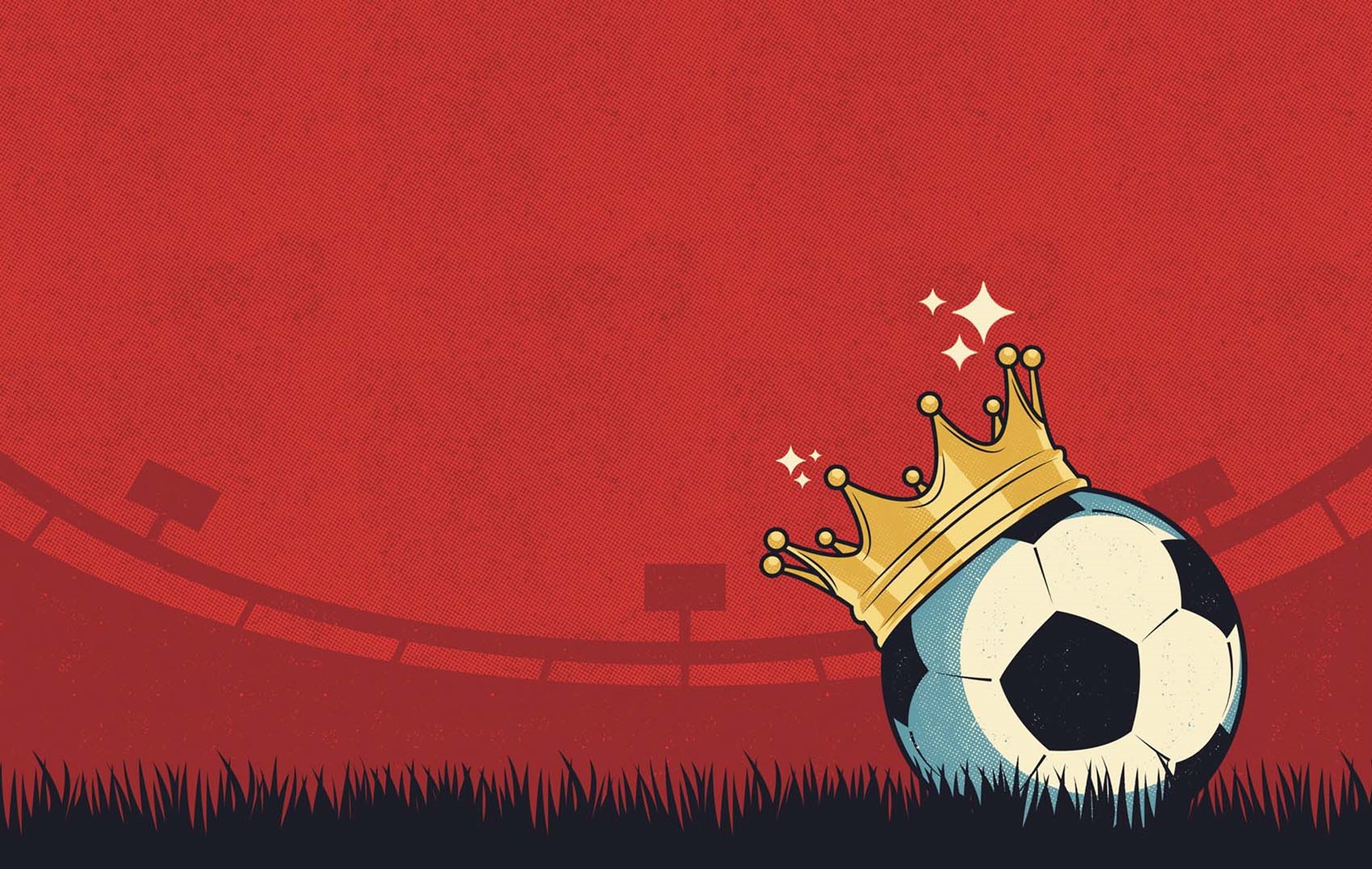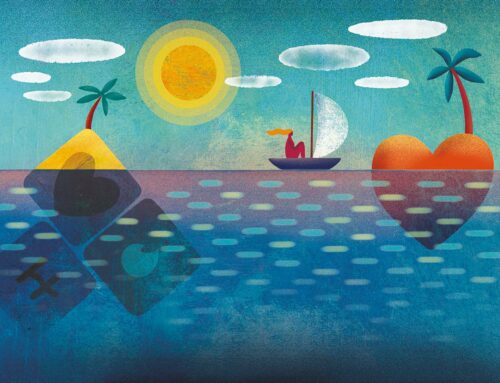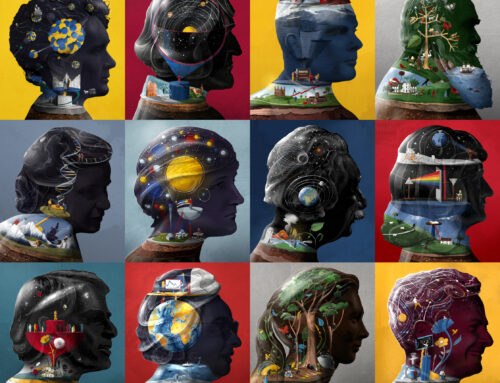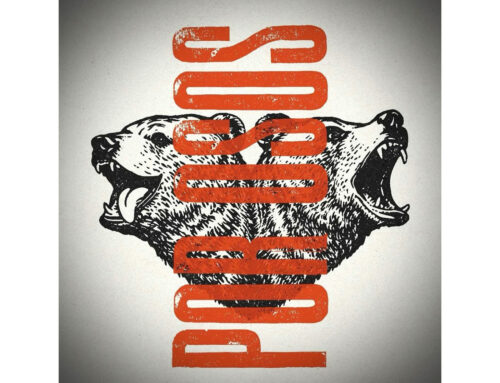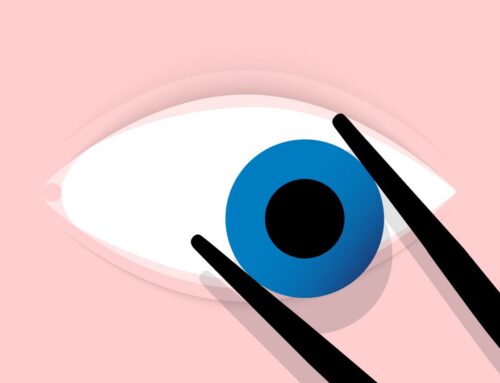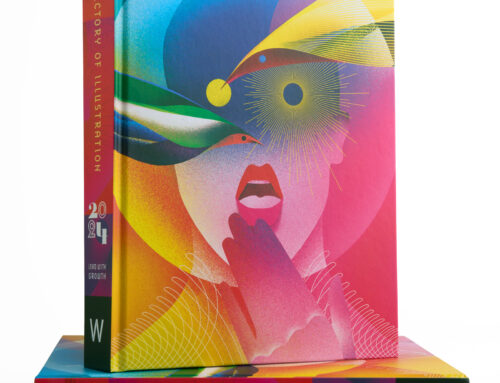ARTIST INTERVIEW: Christian Dellavedova
The Directory of Illustration had the great pleasure of sitting down for an interview with the talented illustrator Christian Dellavedova.
“I have decided to be an illustrator simply because it was the deepest calling of my life. Translating a story into a single image has always been the most exciting challenge for me.”
~ Christian Dellavedova
MEET CHRISTIAN DELLAVEDOVA
Christian Dellavedova lives and works in Milano, Italy. He graduated from IED (Istituto Europeo di Design), where he now hold a teaching position in illustration. He is a teacher at Scuola Internazionale di Comics.
Christian has taken a special interest in editorial and conceptual illustration. Through the years, he has illustrated articles for magazines and newspapers as well helping worldwide agencies on important advertising campaigns. He is a regular contributor to the Italian magazine Internazionale, the most important political magazine in Italy.
Christian has worked for a variety of worldwide clients such as Auchan, Viacom, GEICO, ENI, TBWA, The Boston Globe, Variety, Scientific American, Wired UK, Time Out, Reader’s Digest, Men’s Health, Men’s Journal, Time Inc., Ink Global, Strategy+Business, Canadian Business, Entrepreneur Magazine, Corriere della Sera, Repubblica, Mondadori, Gazzetta dello Sport, just to name a few.


Where did you grow up? What was it like? How did that shape you as a person and creative?
I was born in Milan but I lived for many years in another region of Italy which is Liguria. I grew up by the sea in a small town, Andora, which lives of summer tourism, this allowed me to experience the reflective silence of the autumn and winter seasons and the chaos and movement of the spring and especially summer seasons. It can be said that this has influenced my character and work process as an illustrator (almost always conceptual) in two ways: through the more reflective and contemplative phase in which I try to visualize my illustration and the more technical and lively phase where I create it.
When did you realize you could turn your love of art into a career?
It was two decades ago with a first advertising job for a well-known advertising agency for an equally well-known supermarket chain.
In that case I had to create product-themed characters to be used for promotional campaign (posters, flyers and on-site panels).
From here my love for food-themed illustration began, where I try to apply a concept and my irony to a different product from time to time.
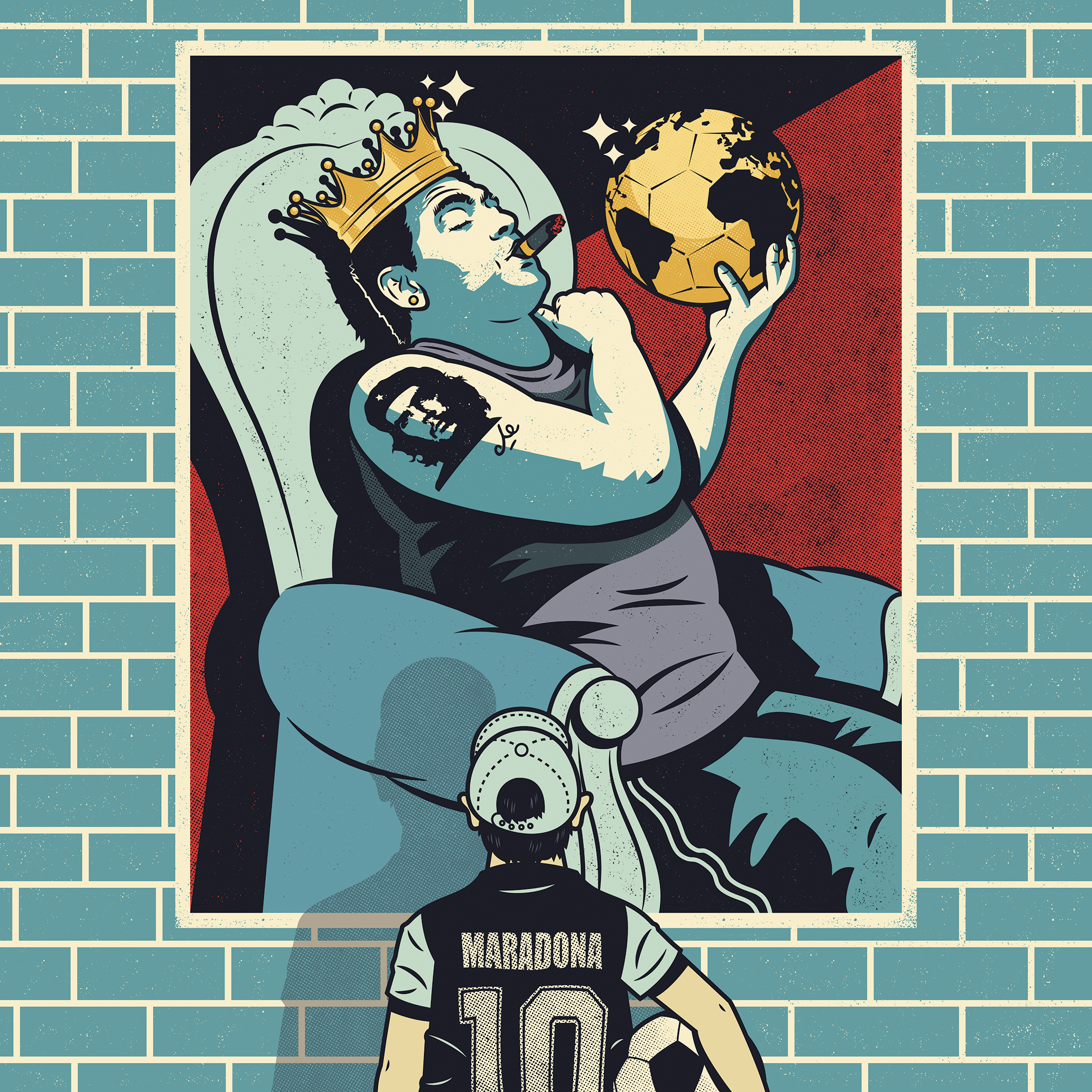
You have a great, graphic aesthetic. How did you develop your style?
I worked for several years as a journalist and editorial graphic designer, starting with some economic publications (Chambers of Commerce) with small experience into the field of infographics where my love for illustration and illustrated graphics was strengthened. Obviously I love illustration and am interested in the work of my colleagues, because there is always something new to discover and learn from others. I’m not born from nothing but I’m a work in progress like anyone else. However, I don’t think I’m anchored to a precise style, this is because I want to have the freedom to experiment, change and even merge my voice from time to time with the ones of the client or magazine I’m working with.
Your work is also so strong conceptually. Can you share with us a little about your creative process? How do you create your concepts and start each project?
It definitely starts from reading the article, since above all I like to express my artistic and graphic opinion on everything I’m asked to illustrate. For me an illustration should make you think and that’s why I not only stop at the title but try to integrate and merge my thoughts with the article I illustrate as in a duet. When I manage to do this I feel accomplished. I have been working with the Italian magazine Internazionale for about a decade and I must say that the over the years they always left me a lot of freedom which has allowed me to become one of the voices of the magazine.
Over the years I have found myself illustrating writers and journalists that I really appreciate such as Noam Chomsky, David Sedaris and last but not least, one of my favorite writers, Zadie Smith. Everything is inside the article and the ideas always arrive, sometimes like a flash, other times more slowly and thoughtfully. This is why I have never been terrified of a blank sheet of paper. This is what I also try to teach to my students at the Scuola Internazionale di Comics in Milan.
Where do you draw inspiration from? Who are some of your favorite illustrators and artists?
For the style I have a lot of reference illustrators. For the development of my conceptual works certainly the very elegant illustrations of Beppe Giacobbe and Guido Scarabottolo. I have always appreciated their irony and simplicity and above all the ability to make people smile and think as if in a beautiful word puzzle game, and it’s the thing I like most about conceptual illustration even though I’m not good at word puzzles.
For the style and bold outlines, certainly most comes out being a boy from the 90s, I love all the Charles Burns’s art who is a bit of my idol and poster art in general. Another influence even if I do a complete different kind of works are the illustrations by Marco Ventura (first my teacher and now my friend) he is a true artist who can be profound with a precise and controlled style, a modern classic, but I can only be precise in vector art.
If you weren’t an illustrator, what other pursuit would you feel called to?
Definitely I would do another artistic activity, but with less programs and computers.
What have been some of your favorite or proudest jobs to work on?
Choosing is difficult, there are many works that I am proud of. Certainly all those from Internazionale but also the covers that I am creating for Luiss, an Italian university, where I am working on a book series with the art director Maurizio Ceccato. We are creating covers that share a synthetic and unique graphic style. The best reward for anyone who illustrates a series of books is to recognize their own hand and see that the series takes shape while maintaining a coherence of style that goes beyond the mere graphic cage in which the illustration is enclosed.
What has changed in illustration since you began?
Although today the amount of space available to show one’s work has increased thanks to social media, this has led to a considerable increase in supply which has inevitably led to a drop in prices. While on the one hand the world of social media has further opened the doors to the world and to direct contact with the end customer, it has inevitably determined everything I say above. Furthermore, the way in which the public uses content has changed and consequently the type of image has changed; the web image is inevitably different from that on paper.
The fact that the way the public uses it has changed, especially in the post-covid era, has affected the diffusion and publication of printed media, of which I am a true enthusiast. Seeing your own illustration published on the cover of a book or inside a magazine generates emotions that I don’t feel with the web.
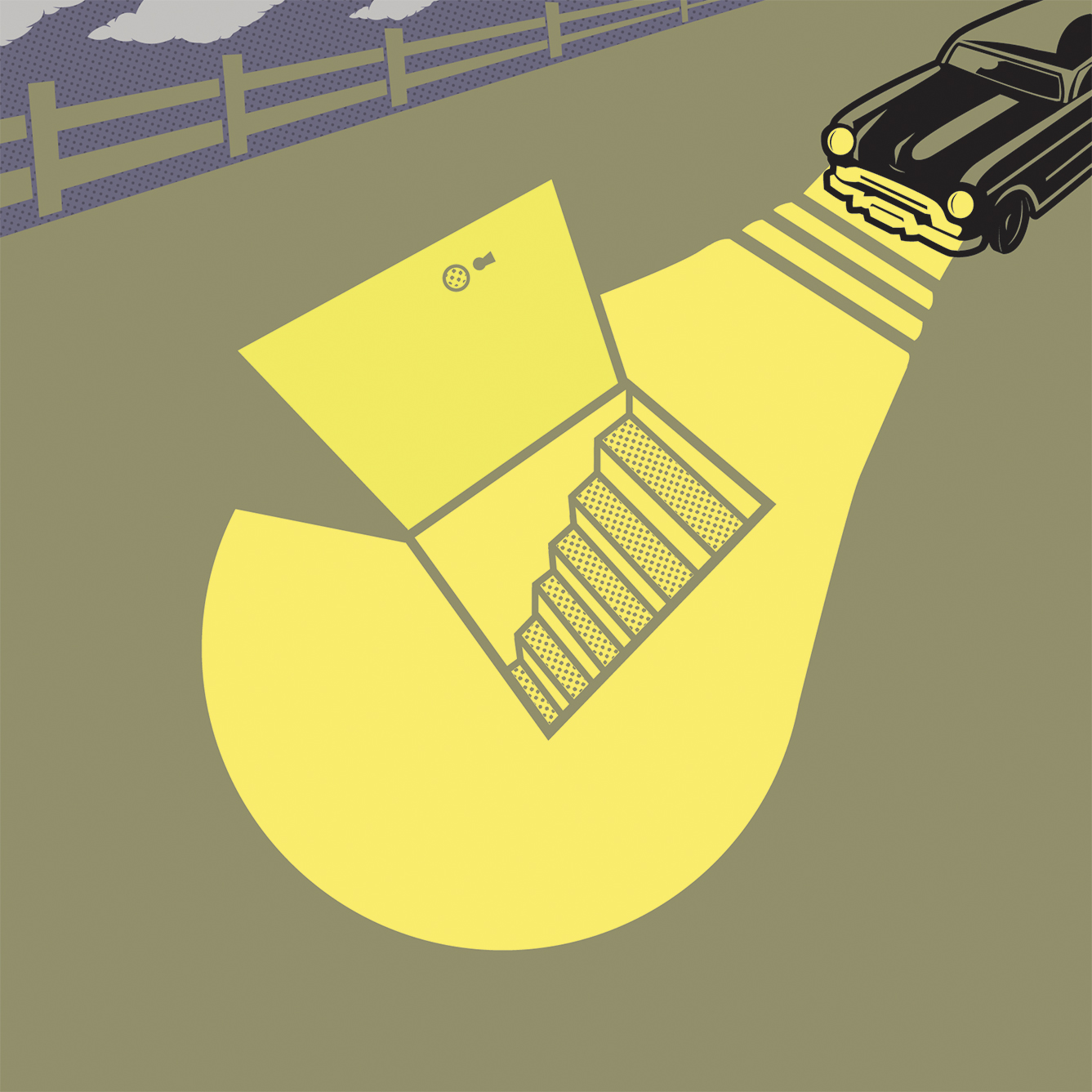
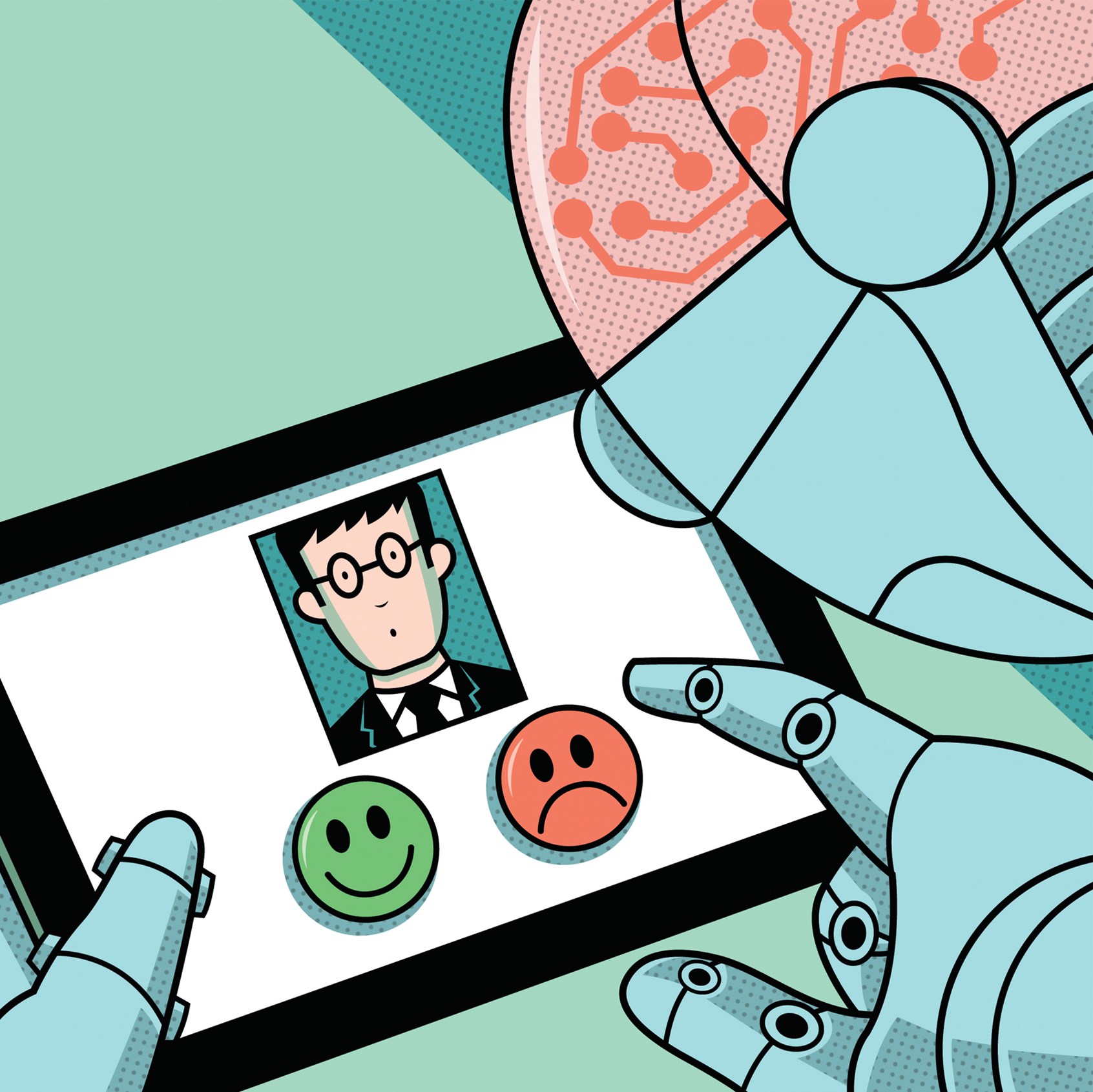
How do you feel about AI and where that’s potentially heading?
I honestly don’t know; without being too philosophical while remaining strictly connected to my work I must necessarily complain about a lack of control in the use of these technologies. They are almost free and allow even those who do not create images to become creators of illustrations and photographs. Today, the creation of this content requires heavy modification to get to the final illustration but given that AI has almost overcome Moore’s law we cannot know, what is certain is that AI learns a lot in rush.
However, there are many unsolved problems and above all questions that arise. For example, will it change copyright laws? Will it lower prices further? I believe the answer is yes to both questions. Will a new professional figure be born who will be a code writer, graphic designer, illustrator, art director and content creator all at the same time? Will new jobs arise? How many will lose their jobs? I don’t know how to answer these questions.
What scares me most of all is certainly the long-term effect. To create an image I have years of study, observation and experience behind me, can a text string replace all this? In the future, after we have been inundated with billions of AI images, will we be able to recognize a quality image from one that is not? Or will it be too late? AI potentially has immediate access to that gigantic collective subconscious that is the web, could it be a tool to do one’s job better and find new paths and new ideas, or not?
Major music companies and movie companies have the resources and means to deal with big IT, illustrators do not, but illustrators are the main suppliers of those same companies, there will be the will to protect those who are most exposed, breaking the classic capitalist paradigms? As you can see I have more questions than answers.
Do you have any dream jobs or clients you’d like to work with?
Over twenty years I have worked with many publishing clients in Italy and abroad (in Italy with almost everyone) and in many other sectors. The client I would definitely like to work with is the New Yorker because it represents the magazine that together with Internazionale introduced me to illustration and I admired it the most.

What would you say has helped you the most in your career?
My stubbornness certainly and the desire to get involved as if it were the first day on every project.
What advice would you give to emerging illustrators?
To do what you like and not follow trends too much: it is better to fail by being yourself than to succeed by copying others, in the long run you always lose in the latter case.

